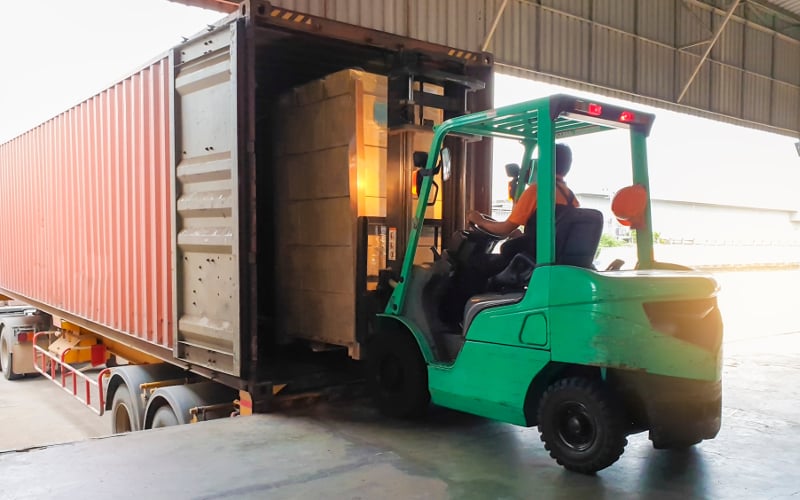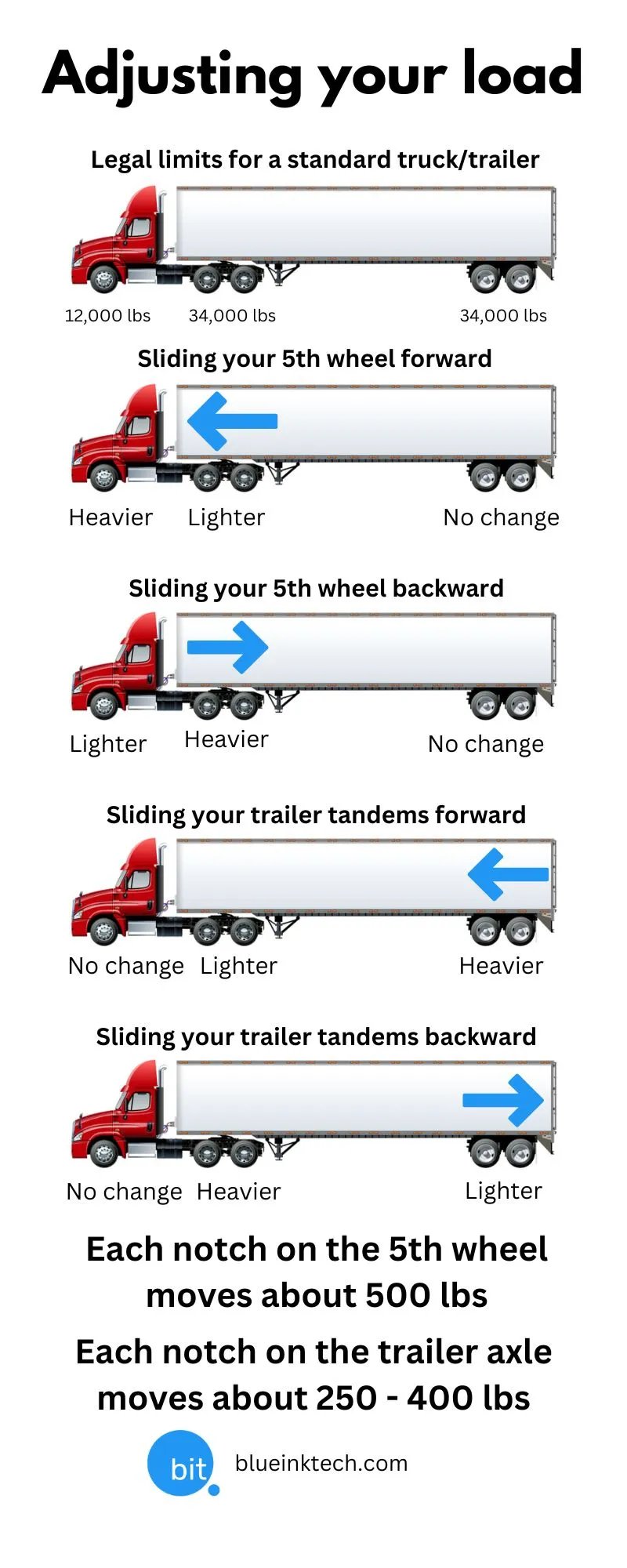
Loading a truck and trailer can basically be considered an art. Whether you are loading pallets, vessels, equipment, steel, logs or anything else you have to make sure the weight is balanced. If you are just starting out in trucking this can be challenging to get right but it's not impossible.
There are many benefits to riding with a well-balanced truck load. The drive feels easier, the wear-and-tear on your equipment is lower and your risk of having an accident drop.
How to check if your truck and trailer load is balanced
Before you can balance a load you have to know how much each axle group on your truck and trailer is carrying. This can be done with the use of in-ground scales, on-board truck scales or using a pressure gauge on your air suspension to determine your weight.
The easiest time you will have with telling if your load is properly balanced is by knowing the weight at the time you are loading. This will save a lot of time securing the load, looking for scales and backtracking if you need to get something adjusted.
Onboard truck scales have a lot of benefits when it comes to getting your gross and individual axle weights. Making sure you load is balanced is a lot easier when you can get your truck weight in real-time. These truck scaling systems typically take about 10 minutes to install and are accurate enough to get you within 300 lbs of the total gross weight.
If you are a single owner/operator using the same truck and trailer every day then you will be able to use a pressure gauge to determine if your load is balanced. It's a little more difficult and requires some math and some trial and error but can be effective if done correctly.
How to adjust loads if the truck and trailer is not balanced
If you find that you are loaded more on one axle there are a couple things you can do to get your truck and trailer balanced. You can adjust your truck loads by sliding your 5th wheel or sliding your trailer tandems. By sliding these 2 pieces on your truck and trailer you can redistribute the weight to the other axles that are lighter.
Adjusting your load using this method will only get you legal or balanced if you are under the required gross weight limits. This will not help with getting an 80,000 lb load legal.
Below is a cheat sheet that you can save that shows you how your load can shift when you slide the 5th wheel or trailer tandems.

What can happen if you drive with an unbalanced load?
Your truck won't react like you expect in a bad situation.
Hauling a load that is not balanced can make driving more challenging. If your trailer axles are heavy this can take weight off of your steer axle and cause the trailer to sway while driving at interstate speed. This can make steering in bad weather more difficult and can lead to an accident.
If the weight of the load is heavy on the drive axle the additional weight on the steer axle can make steering harder with the additional weight. You will be able to feel the truck giving resistance while steering. If you are in a surprise situation where you need to swerve this will be more challenging.
Balanced loads can help keep your truck stable and lowers the chances of having the truck rollover in the case of a surprise on the road. One situation you want to try to avoid is having a higher center of gravity caused by an imbalanced load. A rollover is one of the worst events you can have in a truck.
Driving unbalanced can damage your suspension and tires.
An axle group that is bearing most of the weight from a load has higher pressure than the other tires or air bags. This added stress over a long period of time can lead to a blowout if ignored or not considered while loading.
Difficulty with load securement and off-site scales
A improperly balanced load can affect your load securement when you need to strap, tarp or chain down loads. If you rely on offsite scales to determine your axle weights and find that you are overloaded this can lead to problems. If you are unable to adjust the load by shifting your trailer tandems or moving the 5th wheel the only other option to fix the load is to have the shipper reload the truck. This would mean unsecuring and resecuring the load which could take hours to fix.
Overweight axles will get you fined by the DOT
The last way an unbalanced load can affect you is with the DOT at roadside or at a weigh stations. Overloaded axles are a common violation issued by the DOT. Overloaded trucks and axles fall under the FMCSA's unsafe driving BASIC. These violations will impact your CSA score and can lead to situations such as: increased insurance rates, DOT audits, fines and if it is persistent enough a loss of your authority as a carrier.

